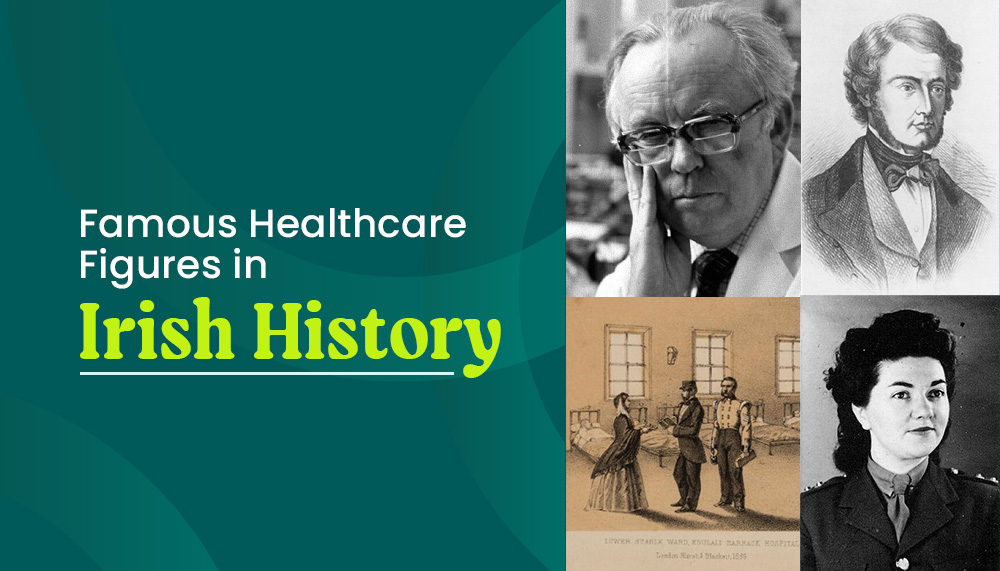As St. Patrick’s Day nears, it’s important to honor and celebrate Irish history. As a healthcare staffing agency, what better way to do that than by examining famous healthcare figures in Irish history?
From nuns to nurses to physicians, Ireland has a rich history in the healthcare field. Here are four that we wanted to spotlight!
Mary Francis Bridgeman
The nurse everyone most associates with the Crimean War is Florence Nightingale, but countless other nurses aided soldiers during the conflict. One of those such nurses was Mary Francis Bridgeman, who was a nun in Ireland’s Sisters of Mercy.
Bridgeman led a group of other Sisters who were sent on behalf of Ireland to nurse those in need in Crimea. They were of particular help during a cholera epidemic and Bridgeman was even appointed as a superintendent of a Crimean hospital for her service.
Funnily enough, for a myriad of reasons, Bridgeman had a frosty relationship with the famed Lady of the Lamp. Nightingale derisively called Bridgeman “Reverend Mother Brickbat” and Bridgeman and her nuns nicknamed Nightingale “the Goddess of Humbug.”
Mary Morris
Like Mary Francis Bridgeman, Mary Morris was an Irish nurse who was sent to aid England during a war. Morris nursed during World War II, most famously tending to the injured during The Blitz and the D-Day Normandy invasion.
Morris’ time during this fraught period of history was documented in her diaries, which are a large source of her fame. The diaries are currently on display in the Imperial War Museum.
Morris was one of the thousands of Irish nurses who had the unofficial moniker, “The Irish Angels”, a large contingent of migrant nurses who came to England during times of need. These so called Irish Angels helped populate and form the National Health Service (NHS), the healthcare system still in use in Great Britain.
William Brooke O’Shaugnessy
Cholera is a disease that was once dreaded and would decimate entire communities. While it still exists today and still affects many, particularly in the developing world, it isn’t the feared killer it once was.
William Brooke O’Shaugnessy, an Irish physician, is one of the people to thank for that. His work in studying cholera helped develop treatments that greatly improved victims’ prognoses. In addition, the treatment, which involves injecting fluids and salts, laid the groundwork for intravenous therapy.
Frank Pantridge
Frank Pantridge may be the person who has saved the most lives on this list. Pantridge, a Northern Irish physician and professor, is responsible for the invention of the portable defibrillator.
Obviously, this invention changed the landscape of emergency medicine. Doctors, nurses and paramedics could literally stave off death with the device, and its installation in ambulances everywhere allowed countless lives to be saved in transit.
Outside of the healthcare field, his work led to the creation of the Automatic Electronic Defibrillator. Better known as the AED, this tool allows the general public to harness the lifesaving power of Pantridge’s invention.
Fittingly, Pantridge is known as the “Father of Emergency Medicine”.

